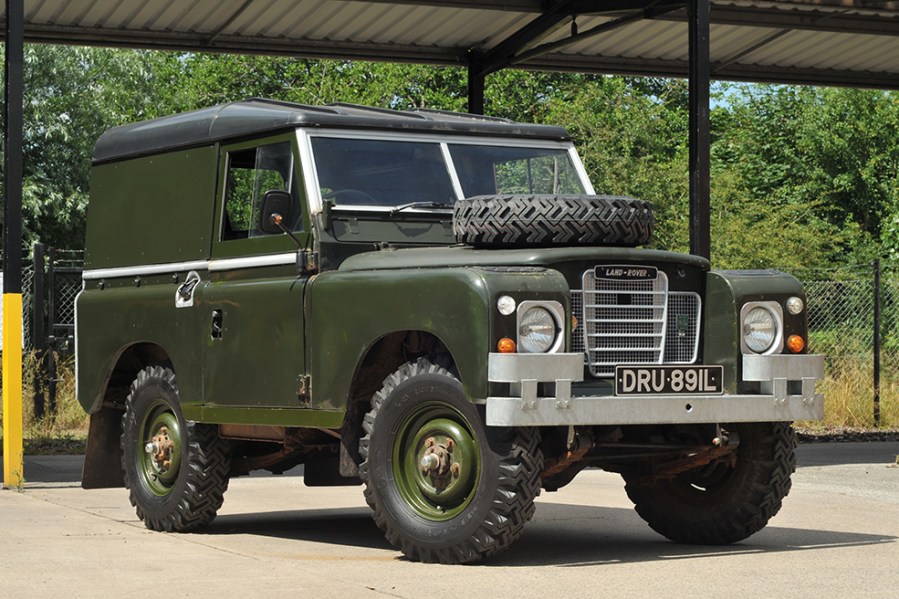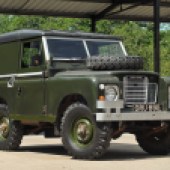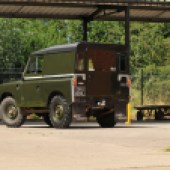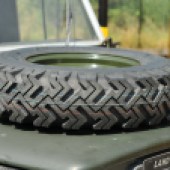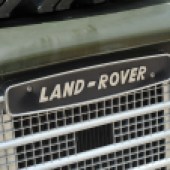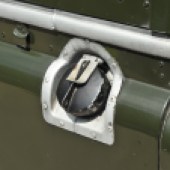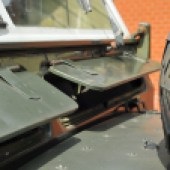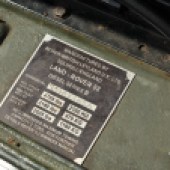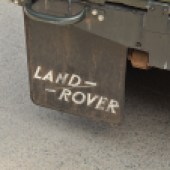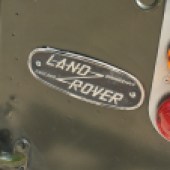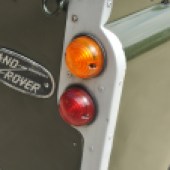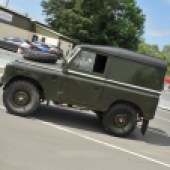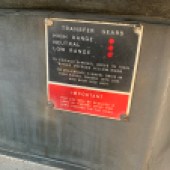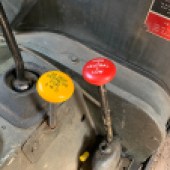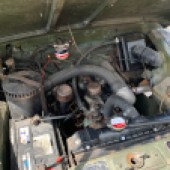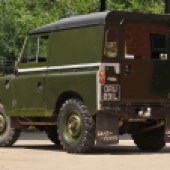As the reimagined Defender looks set to save the Land Rover brand, we revisit the last of the traditional Landies – the Land Rover Series III
With a starting price of £44,000, the brand-new Land Rover Defender is a long way from its utilitarian roots; it’s near impossible to build a basic workhorse example of the current model that the owner of a ‘Series’ model would recognise.
All of this is rather ironic considering that for a huge proportion of its life the original Land Rover was neglected by its maker and given precious little development while the Japanese makers swooped in and took the market around the world.
Considering the relative success of Land Rover as a brand today, it’s easy to forget that the entire marque was originally built on a vehicle considered as a stop-gap to keep the post-war Rover factory busy. Indeed, the first Land Rover wasn’t even a particularly original design, the idea having famously come to Rover technical director Maurice Wilks after using a war-surplus Willys Jeep on his holiday estate.
Impressed by its off-road ability, Wilks reasoned that a British-made version without the parts supply issues of the American Willys could serve as a very useful dual-purpose vehicle for farmers struggling to get back into business in the postwar years.
With his business hat on, Wilks also realised that such a vehicle could reduce Rover’s reliance on upmarket saloon cars which weren’t exactly a big seller in the austere late 1940s, as well as potentially earning valuable foreign currency.
Early prototypes were even built up using Jeep chassis, with the running gear coming from the Rover P3, although Land Rover later developed its own chassis and two-speed transfer box. On this chassis sat a distinctive body which was rather more functional than the military Jeeps and was notable for being panelled in an aluminium/magnesium alloy known as Birmabright.
This was originally chosen as a means of side-stepping the post-war steel shortages and to take advantage of the surplus (and not rationed) aluminium available from wartime aircraft production. Even the distinctive shape was chosen to ease production in difficult times: the simple curves and flat sides allowed the panels to be cut and formed by hand.
Unveiled at the 1948 Amsterdam motor show, the Land Rover was an immediate hit despite a basic specification which meant proper doors and even a full canvas roof were optional extras. It was just what the market wanted though, with its light weight, selectable four-wheel drive and generous ground clearance giving it useful off-road grip even with just 50bhp from the 1.6-litre Rover engine.
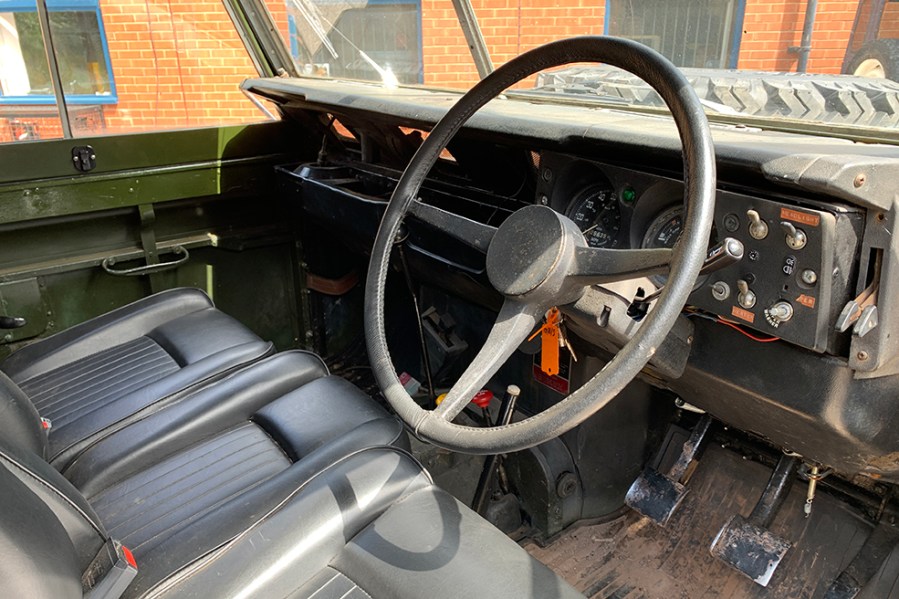
When it became apparent that the vehicle would be more than just a temporary stop-gap, a larger 1997cc engine was offered from1952 and in 1954 the wheelbase was extended from the original 80 inches to 86, this further extended the following year to 107 inches for the new pick-up model. In 1956 the 10-seater Station Wagon was offered on the longer chassis and in 1958 the more refined Series II arrived… although when we say more refined, it’s all relative.
The Series II was the first model to receive attention from a stylist rather than a body engineer and the work – by Rover man David Bache, naturally – is subtle but significant. It was Bache’s reworking of the original shape which produced the distinctive rolled waistline, neatly widening the lower bodywork to cover a wider track. This was complemented by a radiused roof, and on the ‘truck cab’ models, the rounded rear cab corner glass.
The Series II would be short-lived though, launched in 1958 and replaced in 1961 by what we know as the Series IIA which would remain in production until 1971 when it was replaced by the Series III. It’s this which is the model which most of us will mentally picture as a Land Rover and the basic shape would be continued right up to the end of production in 2016.
The Series III carried over its basic mechanical make-up from the Series IIA and it’s a 1973 example of this we have here, in the ‘two and a quarter’ 2.25-litre diesel format.
Despite having been in production for over 20 years when the Series III was launched, the Land Rover in many ways hadn’t moved on from the agricultural standards of fit and finish employed on the earliest examples but spend some time using a Land Rover for proper dirty work and you’ll soon realise that there’s a reason for most of it.
The door handles for example – which are little more complicated than field gate latches – are easily opened with thick gloves on and won’t freeze up or snap off in extremes of temperature. Similarly, the sliding windows may not offer much in the way of security but are opened in seconds simply with a push.
The pedals can be intimidating to a first-time Land Rover driver, since they’re not only further apart but also wider than regular car controls – which naturally makes it easier to drive in wellies or work boots.
It’s harder to make excuses for the rest of the cabin, which looks like a cross between a Meccano model and an Aga, with a few dials ahead of the driver and the rest of the controls scattered around – and generally in well-worn Land Rovers of this vintage, not all labelled either.
Prominent in the centre is the collection of transmission levers: the regular four-speed gearstick, the red lever to change between high and low range and the yellow plunger to engage four-wheel drive in high range. Unlike the Range Rover which employed permanent four-wheel drive from the start, the regular Land Rover of this vintage used a selectable system, being rear-wheel drive in regular use and the lack of a centre differential meaning it was inadvisable to drive on dry tarmac in 4×4 mode for long distances.
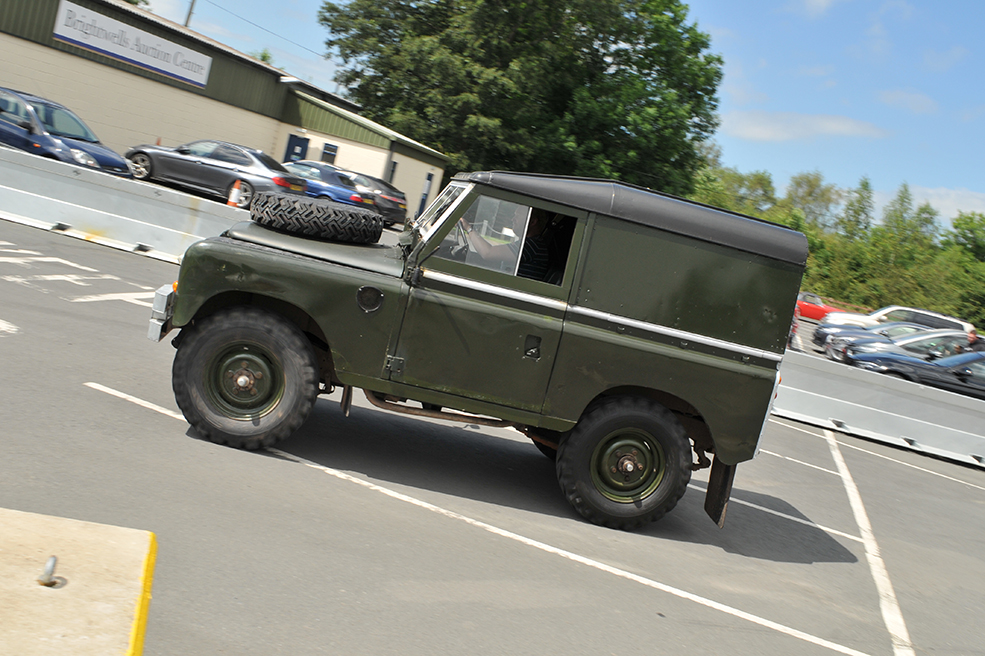
Land Rover Series III on the road
Firing up the Series III reminds you of diesel’s dark past, before common rail injection and electronics smoothed things out. From cold, it needs the ‘choke’ lever pulling out to increase the fuelling and when it catches, you’re in no doubt it’s running thanks to the vibration, clatter and general din it creates.
Slot the Landy’s famously imprecise box into a forward gear – if you’re out of practice it generally takes a few goes to find first in the vague gate – and then ease up the long-travel clutch and with a characteristic bob of the leaf springs, you’re away.
Progress is leisurely in any Land Rover Series III apart from the legendary V8, and in the diesel it’s especially so. But these vehicles aren’t about rushing around and their basic mechanical nature does offer the challenge of driving them properly which is on a par with many more exotic cars.
Not that there’s much charm about low-speed manoeuvring in them, though. The unassisted steering is hard work at farmyard speeds despite the big wheel, while the visibility is terrible, not helped by the side mirrors trembling in sympathy with the diesel and those sliding door windows mean you need a triple-jointed neck to poke your head out for a look behind.
After a while though, you begin to gel with the Land Rover pace, and after just a few minutes with this example I began to realise just how easily it could fit into everyday life. The sideways benches either side of the rear bed, together with the three cab seats give it a total seating capacity somewhere around nine people, while its functional nature means it can be used as a van without being waved away by the jobsworths at the local recycling centre. And with the canvas top unfurled and paddleboards in the back, it’s an open-air beach cruiser for those few days a year when the British summer gives you a glimpse of Mediterranean life.
On a more practical level, the basic Land Rover without safari roof fits into a standard garage and the Land Rover Series III like this is a breeze for DIY maintenance if you don’t mind trotting back to the tool box every few minutes for a ever bigger spanners and hammers.
It’s also still surprisingly affordable. We photographed this patinated but otherwise sound and usable Land Rover Series III in the Brightwells auction in early August 2021 and a few days after these photos it sold for just £5,600 including fees, which is far less than a Land Rover Series I or even a 90/110… and approximately a tenth of what late-model Defenders are being asked for. And what’s more, despite the fitment of the modern Ford diesel engine and the refinement of the coil springs, even those last-of-the-line Defenders aren’t a million miles away from the Series III.
In fact, it’s hard to conjure up a classic at a similar price level which offers a combination of hands-on tinkering, open-air fun and practicality.

